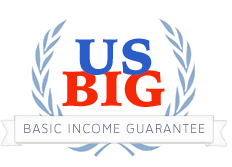What would Andrew Yang’s Basic Income plan have meant for New Yorkers?
Max Ghenis
Andrew Yang’s campaign for mayor of New York has concluded, but his centering of basic income in his campaign (for a second time) remains noteworthy. The candidate proposed a “Basic Income for New York” which would spend $1 billion annually on unconditional cash transfers to the poorest 500,000 adults. In an analysis for the UBI Center, I identified a policy design that meets these criteria and estimated the poverty impacts of such a policy.
The Basic Income for NYC plan intended to reach the poorest 500,000 New Yorkers but did not specify the maximum amount the program would give to a family, nor how quickly it would phase out with their income. These central parameters define a guaranteed income policy, so I used data from the Census Bureau’s Current Population Survey to identify a set that would achieve these goals. The result: a plan that guarantees New York families 30% of the poverty line, and phases out at 50 cents per dollar of income, would meet Yang’s criteria. For example, the poverty line for a single parent with two children is about $28,000 per year in NYC, given its housing costs. That means that a single parent of two with no net income would get 30% of $28,000, which comes to $8,400 per year or $700 per month. If they had an income of $16,000 (including taxes and non-basic-income benefits), their benefit would fall $8,000 to $400 per year or $33 per month.
A policy as targeted as this actually doesn’t reduce the poverty rate, since it phases out fully for families with income at 60% of the poverty line or above, and therefore doesn’t push any families above 100% of the poverty line. Instead, I turned to the deep poverty gap, or the total amount required to raise up all families in deep poverty (below half the poverty line) to the deep poverty line. The deep poverty gap is currently $1.5 billion in NYC, and this policy would lower it by 60%.
However, the plan’s sharp means testing (many families would face total marginal tax rates of 80% or more as a result) would distort work and marriage incentives and make it difficult to accurately reach people as they become eligible. This set of impacts illustrates the trade-off between poverty reduction, which this efficiently achieves, and the simplicity and accessibility of more universal programs when the available budget is fixed. With or without means testing, though, providing cash transfers without a work requirement across NYC would constitute a new step toward an unconditional safety net.
To read the full analysis, visit ubicenter.org/yang-nyc.
Max Ghenis is the founder and president of the UBI Center, a think tank that researches universal basic income policies. You can follow him at @MaxGhenis.





An approach to a very simple basic income that decreases the size of our government. Pay every adult citizen, rich or poor, urban or rural, $1,300 per month. Pay for half of this by eliminating all government welfare programs like unemployment, aid to dependent children, the U.S. Department of Education, etc. Pay for the other half by instituting a simple 23% federal tax on everyone’s income, even on the $1,300 per month basic income, with no deductions, even gifts to charities.